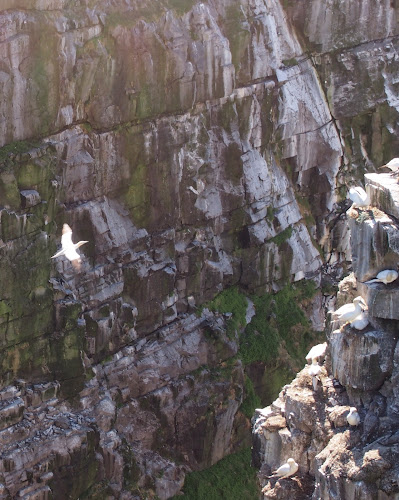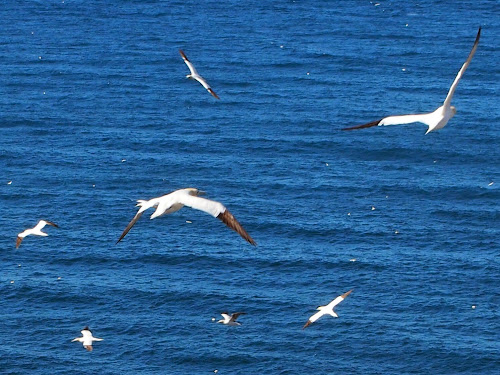On our way to Cape St. Mary’s we were keeping an eye out for moose along the road way. When we mentioned this at the interpretation center it was explained that this was the most southerly tundra and hence not appealing to moose. We did however see a pair about to cross the road shortly after we left the sanctuary and the tundra environment. Unhappy moose encounters are a big cause of accidents up here. We drove through two automated moose detection zones on the highway where lights are to flash when a moose is detected on the roadway. Of course, both of the zones were “out of order.” But, sorry, back to Cape St. Mary’s, the reason for the route we chose to take the ferry at Argentia.
This is why they come. At different times of year, you can see nesting colonies of sea birds, all stratified on the rocky islands and cliffs by species. During our visit, all that remained on “bird rock” were northern gannets. In fact, this is the most southerly of northern gannet nesting colonies – with more than 20,000 birds. It is a spectacular sight. When there are multiple bird species nesting here, it must be overwhelming. With just the gannets, the sky was thick with circling birds (and they made quite a racket).







